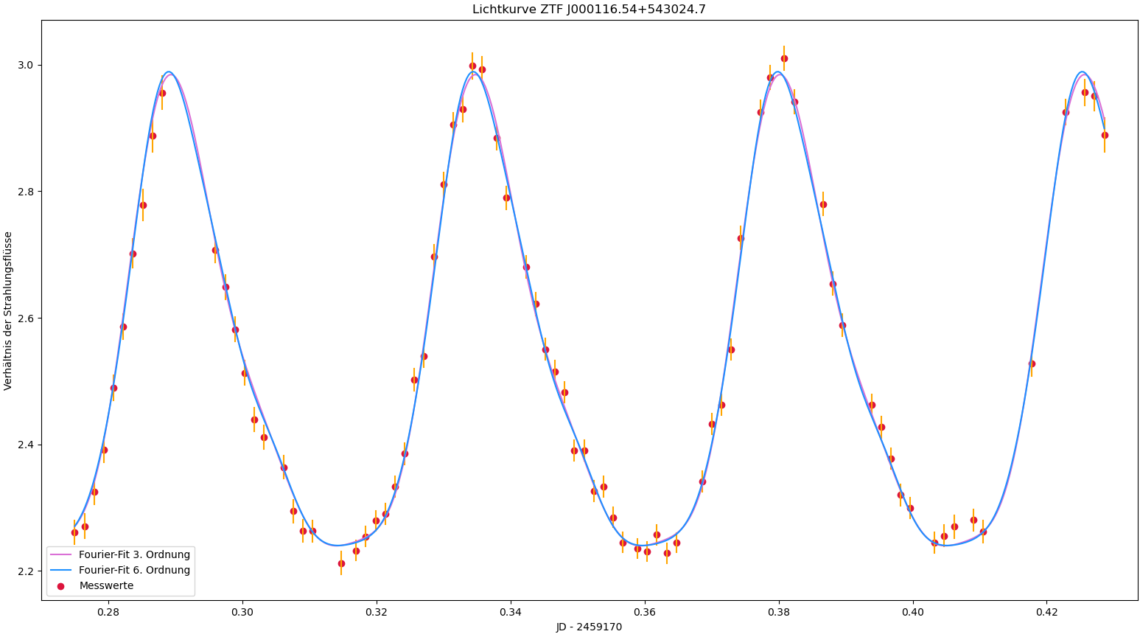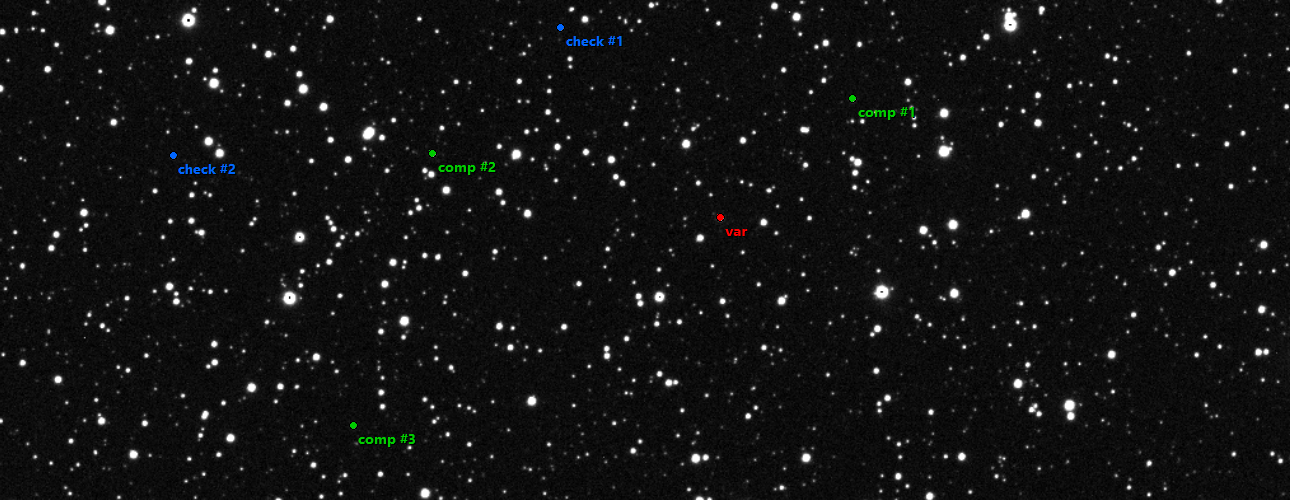Michelle Müller & Christoph Rützel
In the context of the advanced lab courses (Fortgeschrittenenpraktikum) we observed a star of our choice throughout one night. The chosen star’s name is ZTF J000116.54+543024.7, it is located within the Cassiopeia constellation. In photometric examinations it is often more convenient to observe the relative brightness (magnitude) of a star in comparison to that of a set of stars instead of measuring a star’s change in absolute brightness. Ideally, the comparison stars should have no change in their brightness at all. Using this method of differential photometry, systematic errors like changes in atmosphere that would affect the measurement can be accounted for. The graphic on top shows the variable star to be measured, the mentioned comparison stars, and two additional check stars whose purpose it is to be able to ensure that the comparison stars are suitable for the measurement in respect to their change in magnitude.

Originally, the plan was to measure the brightness over a course of 8 hours. However, due to bad weather, the telescope system aborted the measurement early, after about half of the planned observation duration. Using the data gathered, it was still possible to determine key properties of the star with great accuracy.
The resulting graph shows the radiant flux ratio for the star (and the average value of the comparison stars) over a certain time interval. The radiant flux ratio can be obtained via the difference in magnitude. Fitting a Fourier function to the extracted data enables the determination of the period of the brightness variation. Furthermore, the total difference in magnitude can be determined with the minimal and maximal values of the resulting function. This yielded a period of (0.04542±0.00006)d ≈ (65.4048±0.0864)min, which is almost identical to the expected value of 65.6672 min. The resulting absolute change in magnitude is 0.1565mag with a deviation of 2.3% from the expected value of 0.153mag.

